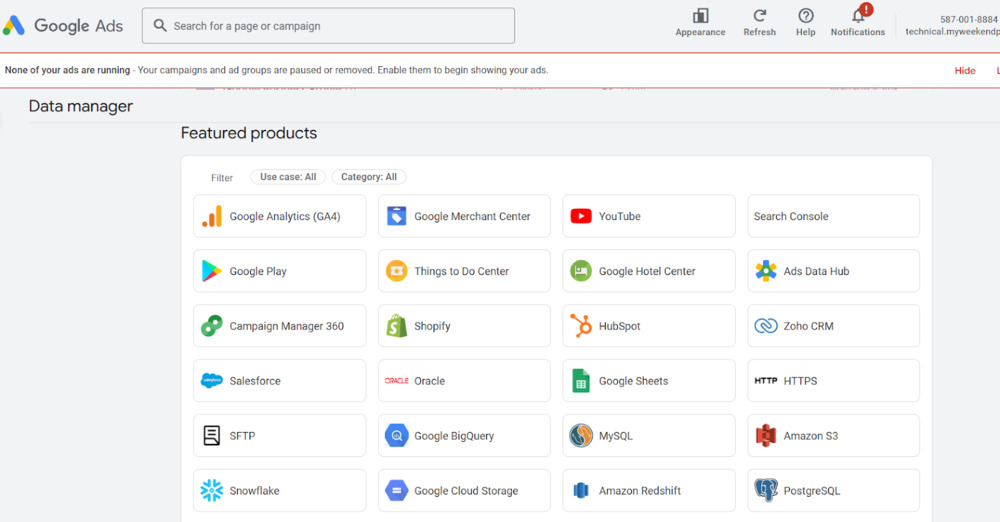Many advertisers still rely on lead numbers as proof of campaign success, but real growth depends on understanding which ads lead to revenue.
It’s no longer enough to celebrate form submissions whereas businesses need to track Google Ads contract value all the way through to signed deals.
By connecting ad clicks with confirmed contracts, you gain insight into conversion value, deal size, and customer lifetime worth.
This approach turns your Google Ads conversion tracking setup into a profit-measurement tool instead of a vanity scoreboard.
Table of Contents
The Lead Trap: Why Your Google Ads Deliver Contacts But Fail to Drive Revenue

Plenty of Google Ads campaigns attract traffic, yet few translate into revenue. That gap appears when marketers fail to track what happens after the first form or call.
Most stop measuring at website conversions, missing out on valuable offline updates such as quotations, negotiations, and deal closures.
Once a lead leaves the website, visibility disappears unless you have complete lead tracking and CRM integration in place.
To solve this, brands are now connecting Google Ads accounts directly with CRM systems to record every phone call conversion, form fill, or app conversion until a contract is finalised.
This helps teams see which ads truly drive income instead of surface-level engagement.
Define Qualified B2B Leads Before You Measure Contract Value
Before linking deals to ads, it’s essential to clarify lead quality. A high enquiry count doesn’t always equal strong intent.
| Lead Type | Description | Tracking Focus |
| MQL (Marketing-Qualified Lead) | Shows curiosity but lacks purchase commitment. | Counted as conversion actions but not valued yet. |
| SQL (Sales-Qualified Lead) | Actively requests pricing or contract terms. | Assigns confirmed conversion value and revenue attribution. |
As an example, a construction supplier might receive ten form submissions. Three come from developers, while the rest are students or small tradesmen.
Only the developer enquiries should feed your conversion funnel and contribute to contract tracking.
By filtering this way, you’ll improve campaign performance and avoid confusing noise with actual opportunity. Learn how to nurture qualified B2B leads with B2B lead generation strategies.
Integrate Google Ads with CRM for Accurate Contract Tracking
Integrating Google Ads with CRM software like HubSpot, Salesforce, or Zoho ensures that every lead, deal, and revenue figure is properly logged.
Here’s the simplified process:
- Install Google Tag Manager and the global site tag on your website.
- Capture each enquiry, phone call conversion, or chat submission automatically.
- When the deal closes, push the outcome back to Google Ads as an offline conversion.
- Google then attributes that result to the right ad, keyword, or attribution model.
This setup allows you to track conversions across channels, devices, and time. By bridging the gap between marketing and actual contracts.
It also records view-through conversions, showing when users saw your ad and converted later by visiting directly or via another device.
Explore how to maximise ROI using advanced conversion value tracking.
Assign Contract Value to Each Ad or Keyword

Once your CRM and Google Ads share data, assign value to every successful conversion. That’s how you turn numbers into revenue insights.
Example:
- Campaign A: 10 sales-qualified leads
- 3 closed contracts worth RM400,000 total
- Average ROAS = 6.5x
| Metric | Result |
| Clicks | 320 |
| Qualified Leads | 10 |
| Contracts | 3 |
| Total Contract Value | RM400,000 |
| Return on Ad Spend (ROAS) | 6.5x |
Every deal updates your conversion value automatically, allowing you to see which keywords or ads bring real business.
That visibility transforms decision-making in which you can identify which audiences or ad groups deserve higher budgets.
Optimise Campaigns Based on Real Revenue, Not CPC
With contract value data flowing in, move beyond basic click-based measurement. Use smart bidding and value-based optimisation to focus on outcomes that generate the most profit.
Here are the most effective bidding strategies for B2B value tracking:
- Target ROAS: Prioritises ads expected to generate the highest contract value.
- Target CPA: Optimises for leads likely to convert into contracts within your desired cost per acquisition.
- Maximise Conversions: Allocates spend toward campaigns with proven revenue potential.
This method allows Google’s algorithm to prioritise deals rather than raw traffic. You’ll quickly see which ads deliver genuine return on investment and which simply use budget.
Improve landing pages through our corporate website design service.
Don’t Guess Your ROI. See It.

Data alone can overwhelm decision-makers. Visual dashboards help demonstrate value clearly.
Use Google Data Studio (Looker Studio) or your CRM’s native reporting to visualise:
- Clicks and leads entering the conversion funnel
- Multiple conversions from the same account (e.g. repeat contracts)
- Average deal value per campaign
- ROI trends by region or service
You can also display cross-platform activity, such as view-through conversions or cross-device conversions, giving your team a complete view of buyer behaviour.
A well-built report communicates confidence:
“Our Google Ads drove 220 qualified leads, producing 20 contracts worth RM1.2 million in total contract value.”
Refine Your Tracking Setup for Precision
Accurate measurement depends on clean tagging and consistent event logging. A few best practices ensure nothing slips through the cracks:
- Add an event snippet to every thank-you page or call confirmation page.
- Set a conversion window long enough to match your average B2B sales cycle.
- Verify that conversion tracking tags capture multiple conversions when the same client signs several deals.
- Combine website, app conversions, and CRM data for unified reporting.
When tracking remains consistent, you can align campaigns, sales, and management around the same performance goals.
Case Study: How Carpet Prima Transformed Ad Spend into High-Converting Revenue

Carpet Prima, a Malaysian carpet retailer, decided to use Google Ads to expand its online sales and capture a larger audience. They implemented a comprehensive, multi-faceted Google Ads strategy.
The Challenge: The Hidden Costs That Capped Conversion Volume
Carpet Prima consistently faced the challenge of making its digital advertising spend as effective as possible to boost both reach and conversions in a competitive environment.
- While earlier campaigns looked promising, there was a persistent need to sharpen strategies for greater efficiency.
- The goal was to simultaneously reduce the cost per conversion, ultimately leading to higher sales volume.
- They sought to maintain a strong Click-Through Rate (CTR) while significantly increasing conversion rates and controlling the overall ad budget.
The Solution: Precision Tactics That Unlocked Efficiency and Sales
To tackle these issues, Carpet Prima, in partnership with Newnormz, focused on several key strategic actions:
- Refined Keyword Strategy: An in-depth review of existing keywords was performed, resulting in the removal of poor performers and the addition of high-intent, long-tail keywords relevant to trending carpet styles and local Malaysian search terms.
- Optimised Ad Copy & Creatives: We executed A/B testing on various ad headlines and descriptions, concentrating on strong Calls-to-Action (CTAs) and highlighting unique benefits like “premium quality,” “wide selection,” and “fast delivery.”New visual creatives showcasing diverse carpet aesthetics were launched for Google Display Ads.
- Enhanced Landing Page Experience: We focused on improving the user experience on Carpet Prima’s landing pages, making sure they were mobile-friendly, loaded quickly, and offered clear product information with simple purchasing navigation.
- Strategic Bidding Adjustments: We deployed smart bidding strategies aimed at maximising total conversions within the specified budget, with bids automatically adjusting based on user signals and the likelihood of conversion.
- Robust Negative Keyword Implementation: Continuous integration of negative keywords helped filter out irrelevant searches, guaranteeing that ad spend was concentrated only on highly qualified prospects.
The Results: The Numbers That Tell the Success Story
The strategic interventions delivered remarkable positive outcomes for Carpet Prima’s Google Ads performance in September 2025:
| Metric | Result | Key Insight |
| Impressions | 385.2K | Indicated broad visibility across Google’s network. |
| Click-Through Rate (CTR) | 6.7% | Showed strong user engagement and ad relevance. |
| Conversion Rate | 14.6% (a 22.0% increase) | High efficiency in turning clicks into valuable leads or sales. |
| Conversions | 3.8K (a 11.7% increase) | Significant volume directly contributing to sales objectives. |
| Cost per Conversion | RM38.01 | Represented an efficient customer acquisition cost. |
| Total Spend | RM142.84K | The budget was utilised effectively to generate these results. |
These results clearly demonstrate the success of Carpet Prima’s data-driven Google Ads approach, highlighting how targeted actions can lead to impressive growth in key performance indicators for a B2C retail business.
Paired with strong SEO Services, they established a reliable pipeline of qualified prospects searching specifically for their products.
Think You’re Overspending? Let Industry Benchmarks Tell the Real Story
Understanding standard industry benchmarks helps set realistic expectations. Every sector features different average CPCs and conversion rates. For example:
| Industry | Average CPC (RM) | Typical Conversion Rate | Notes |
| Professional Services | 15 – 25 | 8 – 10% | High intent, strong ROI potential. |
| Software & Tech | 12 – 22 | 5 – 8% | Highly competitive but scalable. |
| Manufacturing | 8 – 14 | 4 – 6% | Performance depends heavily on technical keywords. |
| Education & Training | 6 – 12 | 3 – 7% | Subject to seasonal spikes during enrolment periods. |
These figures reflect typical regional averages compiled by various marketing agencies. They serve as a crucial reminder that high CPCs do not automatically signify inefficiency.
They often indicate valuable markets with users ready to make decisions. When reviewing your campaigns, it’s vital to compare performance against realistic industry benchmarks rather than arbitrary cost goals.
Why an Accurate Attribution Model Matters
The way conversions are credited impacts how budgets are allocated.
Experiment with different attribution models inside your Google Ads account to identify which touchpoints deserve recognition:
- Last-click attribution highlights direct-response ads.
- Data-driven attribution spreads value across all assisting keywords.
- Position-based attribution rewards both the first and last interactions.
A balanced model helps you understand how conversion actions such as forms, calls, and repeat visits contribute collectively to final revenue.
Connect Every Click to a Contract.
True digital success comes when every ad click can be traced to a contract value.
By integrating CRM systems, fine-tuning conversion tracking tools, and applying smarter bidding, your campaigns become performance engines instead of guesswork.
Each click, call, and follow-up adds to the story of your marketing impact. With this clarity, your team can confidently invest where results are proven.
Ready to close the loop between marketing and measurable profit?
Contact Newnormz to implement Google Ads tracking that connects campaigns directly to contracts and unlocks your true return on investment.






